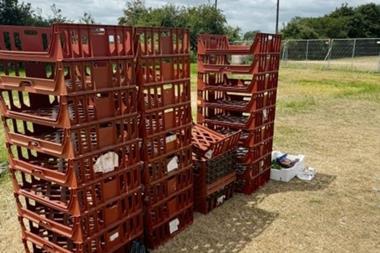John Mitchell, partner at law firm Blake Morgan, looks at the essential role of an asbestos management plan, particularly for older food manufacturing plants
The harsh consequences of health and safety failings in relation to asbestos will come as no surprise to bakery managers.
Last year, for example, food manufacturer Mizkan Euro was fined £120,000 for failing to provide an asbestos survey before a factory wall was demolished at a former site in the West Midlands.
The presence of asbestos in workplaces is regulated by the Control of Asbestos Regulations 2012, which was introduced with the aim of forcing those responsible for maintenance of a workplace to find out whether they had asbestos-containing material (commonly referred to as an ACM) in their buildings and to deal with it if they did.
So what are the particulars of the legislation?
The law does not insist that any asbestos found must be removed. Instead, it treats it like any other health and safety hazard and requires a risk assessment.
However, unlike a conventional risk assessment, it requires that control measures are written into a management plan that must be shared with the emergency services and any other person likely to disturb the asbestos, such as maintenance teams and external contractors.
HSE guidance
Guidance issued by the Health & Safety Executive (HSE) suggests the principal factors in assessing the risk posed by any ACM relate to the type of asbestos, the material it is in, its location, its condition, the sort of activities that might disturb it and the frequency of those activities.
The weighting given to these factors in HSE guidance means a risk assessment could conclude that a lot of ACMs in a workplace can be left in place (managed) because they are in infrequently visited areas or are in good condition, can be prevented from crumbling by being painted and are unlikely to be damaged.
Not properly implemented
My own experience is that, despite the strict rules, the number of prosecutions of undertakings for allowing workers to become exposed shows the law is not being properly implemented.
Older food manufacturing plants commonly contain asbestos.
I recently acted for a manufacturer that had carried out a full survey when the law came into force and then another, more recently, just to check up. In the years that had passed, asbestos that had been in good condition at the time of the survey was no longer in good condition; the rooms in which it was contained were no longer regularly used, no-one had noticed what was happening and, worse still, no-one was sure what occasional use the rooms had been put to in the meantime.
The company thought it was doing the right thing by having a new survey carried out, but what it should have been doing was re-inspecting the asbestos on at least an annual basis. There was no prosecution, but it caused a lot of expensive and embarrassing messing around until the problem was put right and the union satisfied its members had not been contaminated.
Stumbling block
At my own firm, my experience with asbestos means that I frequently work with corporate transactions teams when they are selling or buying a business, since a failure to carry out an assessment or to have a management plan can be a major stumbling block to a successful deal.
It never ceases to amaze me, after so many high-profile HSE campaigns, how many businesses haven’t ever had their premises surveyed and don’t realise that they needed to – even when they are in sectors that are known to be high-risk due to their reliance on heat as part of their process.
Leaving aside the health and legal implications, the reputational and financial cost can be high.
To my mind, the message is clear: check to make sure you have a survey and if the survey says you have asbestos you are meant to be managing, make sure you have a plan and do what the plan says. It might be a hassle in the short term, but in the long term it is peace of mind – for owners, managers and shop floor alike.














































No comments yet